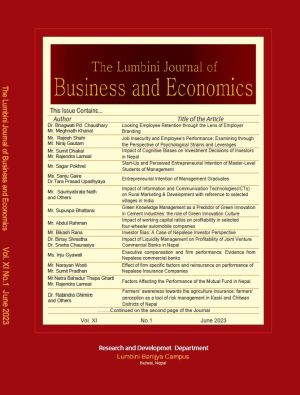Investor Bias: A Case of Nepalese Investor Perspective
DOI:
https://doi.org/10.3126/ljbe.v11i1.54321Keywords:
Investment Management, Behavioral Finance, Behavioral BiasAbstract
Behavioral finance incorporates the field of psychology into finance and studies the behavior of individual which are guided by behavioral biases. The current study aims to examine the behavioral biases which can be seen in Nepalese stock investor and studies if the behavioral biases affect the financial decisions of investor or not. The study tested the following behavioral bias: Loss Aversion, Overconfidence, Optimism, Mental Accounting, Illusion of Control, Confirmation and Status Quo Bias. The data was collected from 136 respondents. The sample size was set as minimum of 120 on the basis of rule of thumb of Roscoe (1975). Likewise, four in-depth interviews were taken in order to collect response from institutional investor. The number of interviews for institutional investor was determined on the basis of Rao soft Sample Size Calculator. The study showed that Loss aversion, overconfidence and confirmation bias were correlated with financial decision making of the investor. The correlations were significant. But the regression analysis showed that there is influence of loss aversion, overconfidence and optimism bias in the financial decisions. Confirmation bias did not have significant relationship. Also, the behavioral bias as a whole affects the financial decisions. Likewise, the study also showed that status quo bias and mental accounting bias are prevailed in the institutional investor. These biases also influenced the individual investor financial decisions. As a whole the study shows that Nepalese investor are influenced by behavioral biases.




